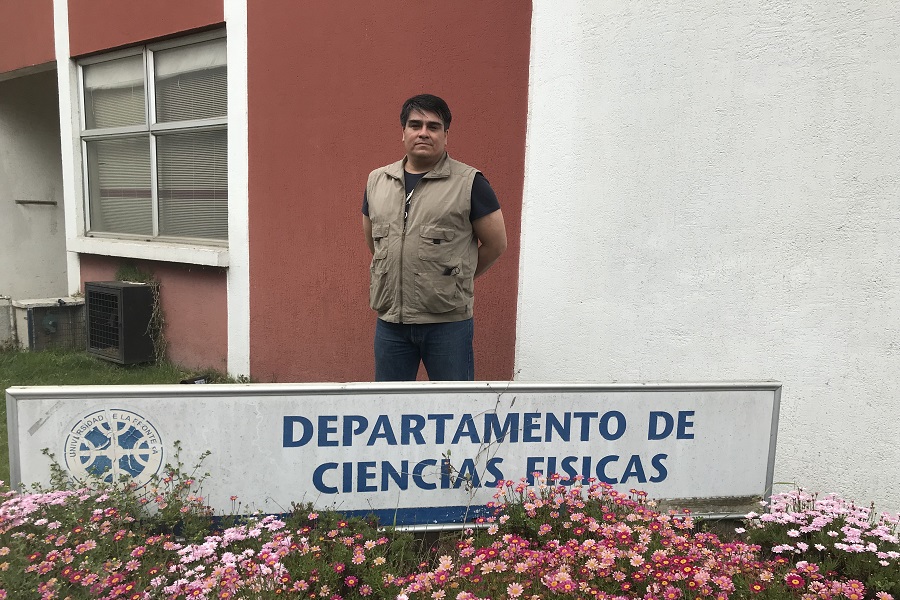|
Two papers of Dr. Pablo Riquelme, an academic of the Department of Physical Sciences of the Universidad de La Frontera (UFRO) were cited in Scientific Background on the Nobel Prize in Physics 2021, where the arguments are given that allowed Dr. Giorgio Parisi of the Sapienza University of Rome (Italy) to be distinguished with the Nobel Prize in Physics 2021. |
The winners of this year´s Nobel Prize in Physics were announced at the beginning of October and one of them is Dr. Giorgio Parisi of the Sapienza University of Rome in Italy, for his groundbreaking contributions to our understanding of complex systems, with the discovery of the interaction of disorder and fluctuations in physical systems from the atomic to the planetary scale. Each year, when this honor is granted, a text with the scientific background that justifies the awarding of the Nobel Prize is released. This year, two works developed by Dr. Pablo Riquelme, an academic of the Department of Physical Sciences of the Universidad de La Frontera (UFRO) were cited in that text. Dr. Riquelme explained that “around 1980, Giorgio Parisi discovered hidden patterns in disordered complex materials, obtaining a mathematical method called Replica Symmetry Breaking (RSB) to solve the problem. This theory has been studied and applied by researchers in the fields of magnetism, statistical physics and others for about 40 years, and the successful demonstration of the validity and success of this theory was accomplished indirectly by several authors since the presentation of this theory”. The first direct evidence supporting RSB was shown in “Experimental evidence of replica symmetry breaking in random lasers”, published by N. Ghofraniha et al., Nature Commun, in January of 2015. “This group from Italy was able to demonstrate the analogy between Spin Glasses and Random Lasers (in a 2D system – organic layer) for the first time, and to directly measure the behavior of the probability distribution of the replications, analyzing the intensity fluctuations of the random laser,” explained Dr. Riquelme. “Together with the group from Brazil, which I work with, we published a verification of the RSB theory in a random laser (3D system – nanopowders with crystalline particles doped with neodymium ions): ‘Observation of Lévy distribution and replica symmetry breaking in random lasers from a single set of measurements, Scientific Reports’ in June 2016, which was cited in Scientific Background on the Nobel Prize in Physics 2021 as part of the experimental demonstrations of the work of Giorgo Parisi,” he added. Furthermore, a second paper developed by the research group in which Dr. Pablo Riquelme participates was cited as another example of the application of the theory of Dr. Parisi, a study about the relationship between the complex systems of turbulence hierarchy in a random fibre laser, which was published in Nature Communications. “This makes me very proud and motivates me to keep working on the ideas which I try to explore at the Universidad de La Frontera. I am currently working with my friends and colleagues from Brazil, who want to get to know and work with our university. Our work on papers inspired by the ideas of Dr. Parisi does not end with getting the Nobel Prize, on the contrary: this is the beginning for new research in different fields, such as biology, neuroscience, climate, machine learning, artificial intelligence, and so on,” said Dr. Pablo Riquelme. The Faculty of Engineering and Sciences also highlighted this citation. “It is a great source of pride for our Faculty that our researcher´s work is cited in the research of Dr. Giorgio Parisi, who won the Nobel Prize in Physics in 2021. There is no doubt that this citation shows the relevance and impact of the research that is being developed at UFRO. It is an important encouragement to support and strengthen the work of our researchers,” said Dr. Jorge Farías Avendaño, the Dean of the Faculty.
Written by: Daphne Bormann Parada
|





